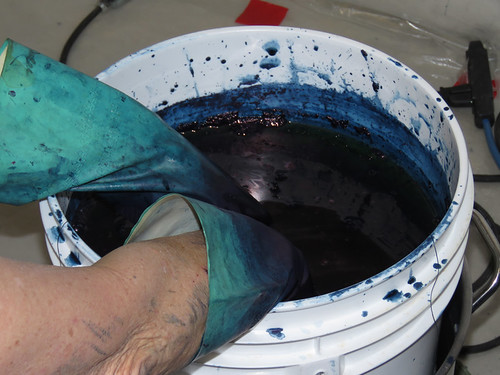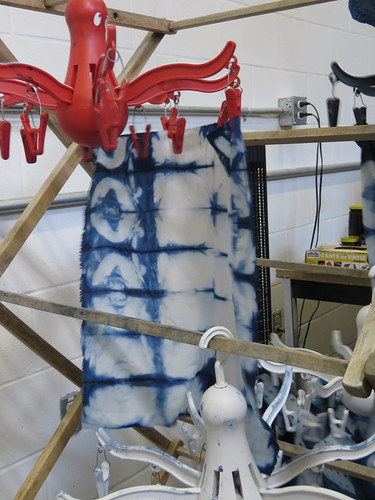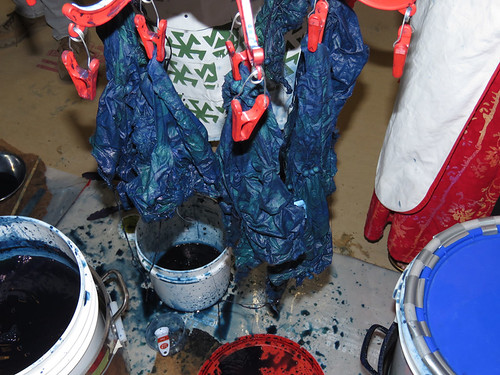True blue

If you own a pair of blue jeans, you're familiar with indigo, the dye used to colour them. Indigo, which is a legume like peanuts, has a long and fascinating history and while not the most straight-forward procedure to get the dye into the cloth, it's not that challenging if you have all the supplies and a proper studio in which to work.
As I don't, I took advantage of a half-day class with Lyn Pflueger, a wonderful felter, dyer, spinner, and weaver (and long-time friend) who lives near Calgary, to explore shibori techniques and indigo, a classic combination, at a half-day adventure put on by the Esker Foundation.

The first technique we did used folding and clamping before putting our packages into the indigo pot: here's mine hanging up after two dips. I got too keen on the clamping part to the extent that the fibres in the centre were untouched by the dye, but I did get kind of a nice border pattern.

Time for technique two: sewing. It would be an understatement to say that I'm a sewer: in fact, I so don't like sewing that I knit as many things as possible without seams. Heck, I even avoid darning-in ends whenever possible! But for this project, I took needle and thread in hand, choosing two straight-forward patterns named "mare's teeth," which forms the border, and "spider web" at the centre of the piece of fabric.
After two dips, drying, pulling the threads out, then washing, the finished result is below: I'm rather pleased with it, although I have no idea what I'll do with it.
Yet.


No comments:
Post a Comment